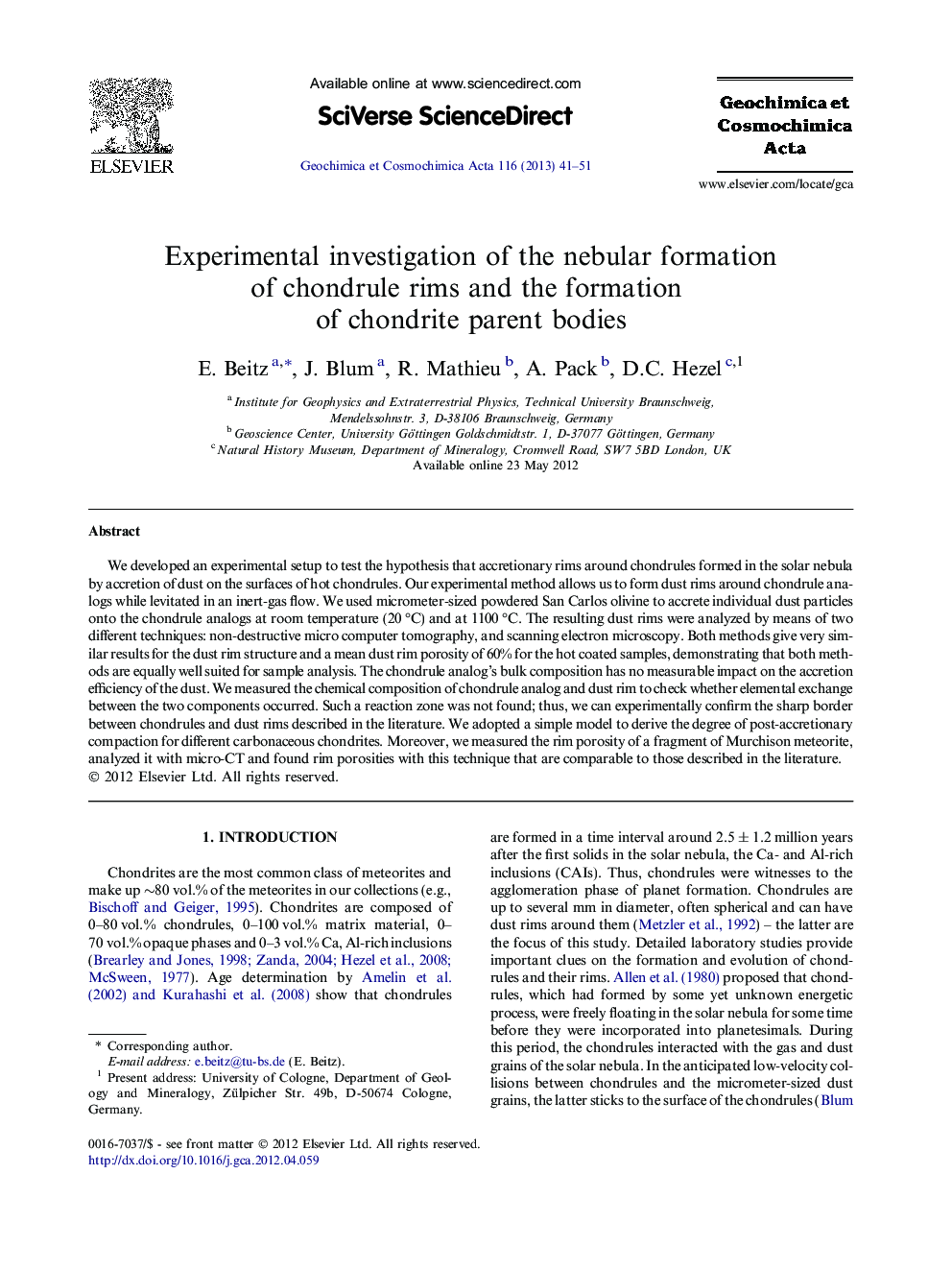| Article ID | Journal | Published Year | Pages | File Type |
|---|---|---|---|---|
| 4702247 | Geochimica et Cosmochimica Acta | 2013 | 11 Pages |
We developed an experimental setup to test the hypothesis that accretionary rims around chondrules formed in the solar nebula by accretion of dust on the surfaces of hot chondrules. Our experimental method allows us to form dust rims around chondrule analogs while levitated in an inert-gas flow. We used micrometer-sized powdered San Carlos olivine to accrete individual dust particles onto the chondrule analogs at room temperature (20 °C) and at 1100 °C. The resulting dust rims were analyzed by means of two different techniques: non-destructive micro computer tomography, and scanning electron microscopy. Both methods give very similar results for the dust rim structure and a mean dust rim porosity of 60% for the hot coated samples, demonstrating that both methods are equally well suited for sample analysis. The chondrule analog’s bulk composition has no measurable impact on the accretion efficiency of the dust. We measured the chemical composition of chondrule analog and dust rim to check whether elemental exchange between the two components occurred. Such a reaction zone was not found; thus, we can experimentally confirm the sharp border between chondrules and dust rims described in the literature. We adopted a simple model to derive the degree of post-accretionary compaction for different carbonaceous chondrites. Moreover, we measured the rim porosity of a fragment of Murchison meteorite, analyzed it with micro-CT and found rim porosities with this technique that are comparable to those described in the literature.
